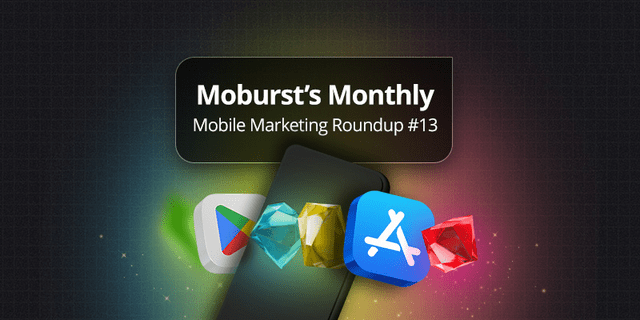
Building a great app is not enough for success in mobile, despite what many claim. Aggressive promotion with install ads is not the key either. There are many hurdles to overcome on the way to the top of the download charts, and some mistakes along the way are more common than others. This specific one we see all too often, and as a mobile marketing agency – it pains us. App marketing done right requires experience, knowhow and technology tools that most marketers lack. This results in ineffective use of mobile marketing budgets, lack of data and transparency in the process, and low ROI at the end of the day. The Holes in Your Funnel Planning your app marketing strategy, you’ve probably sketched out your conversion funnel. In that funnel, there is a step that you have very little control over but cannot skip – the download page in the app store. This is one of the most common “holes” in the conversion funnel, created by misconceptions about the process of qualified user acquisition. What many marketers tend to forget is that the download page in the app store is usually where most users make their decision to install (or not install) an app. The average user will make this decision in just 3-6 seconds. So if you do not invest in making this experience count, No matter how much money you throw at media, or how creative and awesome your ads are, users will simply fall through the hole in the funnel created by an inferior app download page. Odds are you measure your mobile media campaigns, then optimize and A/B test the messaging and targeting for better performance. But while doing this, you might be forgetting that the real “magic” happens on the app page. So optimizing the ads without optimizing the store’s landing page is doing half the work (or possibly less). Today, advanced tools and methods let you measure and A/B test the app page content to achieve optimal conversion rates, making it a complete experience for the user and encouraging downloads. In other words, if marketers invested even a small percentage of the budget they spend bringing users to the download page on refining the page content to actually get users to install the app, their ROI would be so much higher. Getting Found (and Why It Matters) Another reason to optimize your app page in the store is organic traffic. Not only do most users discover apps by using the app store search engine, but these are also the most valuable users to your app. According to research conducted by Mixpanel, organic users are 70% more likely to use the app two months after installing it than ad-acquired users. These users actively looked for an app to answer their needs, so they are most likely to install it and stay loyal users over time. Obviously, you want these users to see your app before that of the competition.
Many major brand apps out there fail to do this. For example, when searching the app store for the term “watch tv”? The obvious result, Netflix, is not in the top 5. Another term is “documents”. You’d expect to find Microsoft with the office apps in the top 10. Well, they just aren’t there. Their competitors are. Try typing in “find flight”. If you’re looking for familiar names like Expedia, Kayak and Orbitz in the top 5, you’ll have to keep scrolling. They’re somewhere down the search results list. What are they missing? The process of researching, designing and compiling the most effective content strategy for the app store pages of your app. Or as it’s called in the industry – App Store Optimization, or ASO for short. It’s often called the “SEO of mobile apps”, but at this point you’re probably beginning to understand it’s far more than that. ASO – Whose Job Is It Anyway? Nowadays, it’s mostly gaming giants and mobile powerhouses that see the vast potential of well-executed ASO. They employ in-house teams of about 8-9 professionals for ASO research, creative, content and tech development to help them get ahead in the competitive market of mobile apps. When it comes to other mobile app categories, there is a severe shortage in effective ASO. The app stores are full of descriptions that read like they were written by developers (who are best left to writing code) or PR managers (who are usually unfamiliar with app store algorithms), and screenshots that are just that. Boring screenshots and unattractive descriptions. Odds are, you are not going to spend time and money on an in-house team of ASO experts. Unless mobile apps are the core of your business it’s simply wasteful and ineffective. So what many marketers do is entrust app marketing in the hands of a digital marketing agency and hope that they know what they’re doing. But do they?
Digital marketing agencies are used to the standard digital conversion funnel, where they have all the control of the landing page, know the trends, ad-networks and best practices. But when it comes to mobile, they often lack experience with app store algorithms and the rapidly developing world of mobile user acquisition. The result? Underdeveloped ASO that doesn’t live up to its potential, and truckloads of marketing dollars thrown to the wind with little to show for it. Mind the Gap – The Path to Mobile Success The state of mobile app marketing today is somewhat ridiculous. Millions of dollars across the industry are being invested in media buying and driving traffic to mobile app pages. The people managing these budgets either don’t have resources allocated for ASO efforts, or are disconnected from the ASO process (as it is managed by someone else in the organization). By separating media buying and ASO efforts, instead of synergically structuring them into a mobile marketing strategy, many app marketers are simply shooting themselves in the proverbial leg. What’s even more absurd, is that even though many app marketers have become aware of the potential ASO holds, they still hesitate to invest a small percentage of their user acquisition budget to plug this hole in their funnel. To generate a positive ROI on your app you need to do much more than buy ads, invest in PR and hope for the best. When constructing your mobile app marketing strategy, you must keep in mind that this is not your old digital marketing funnel. In our experience, effectively executed ASO can lower CPIs by over 20% on average. The impact this improvement can have on your ROI is a significant one, and the results over time can be more effective than any other app marketing effort. *This post was originally published on Mobile Advertising Watch.








